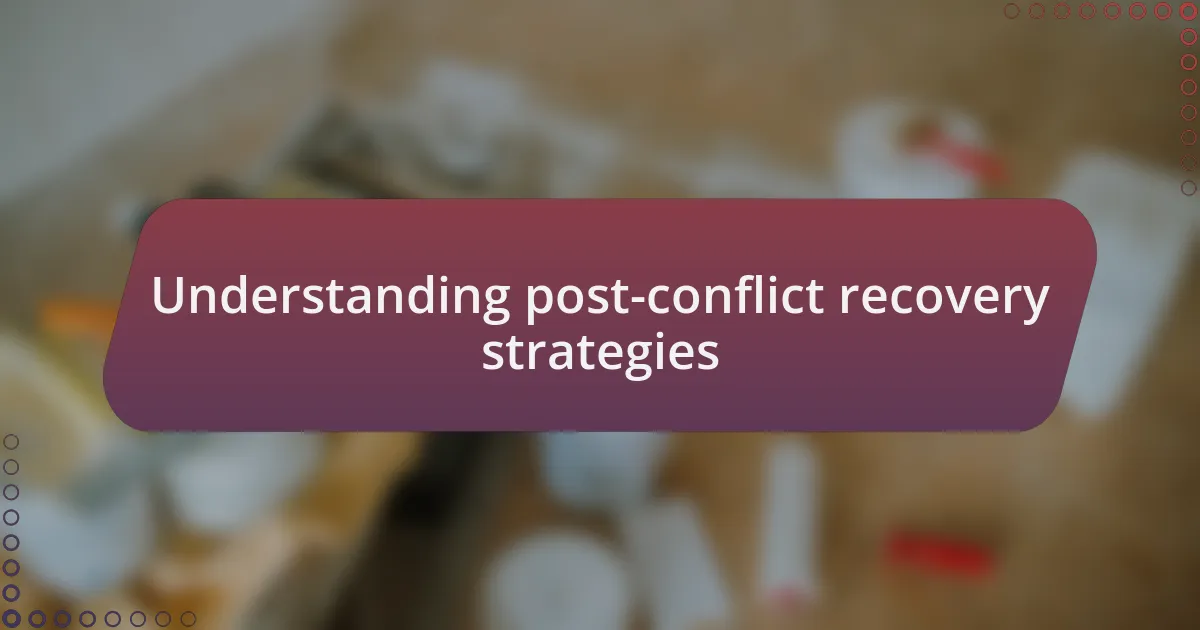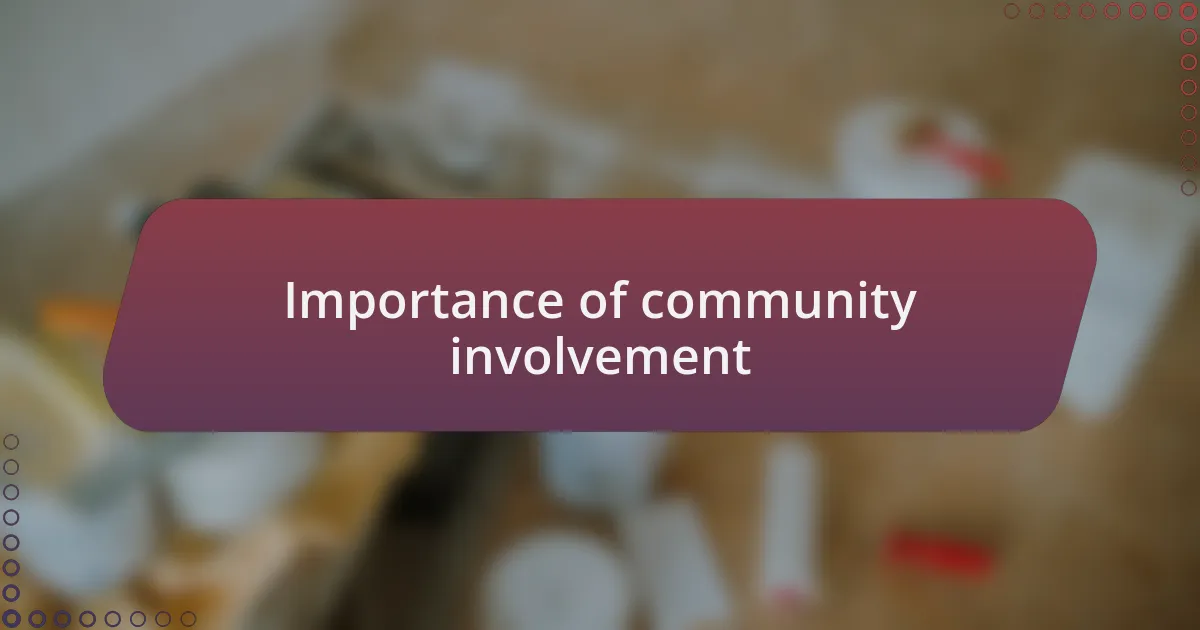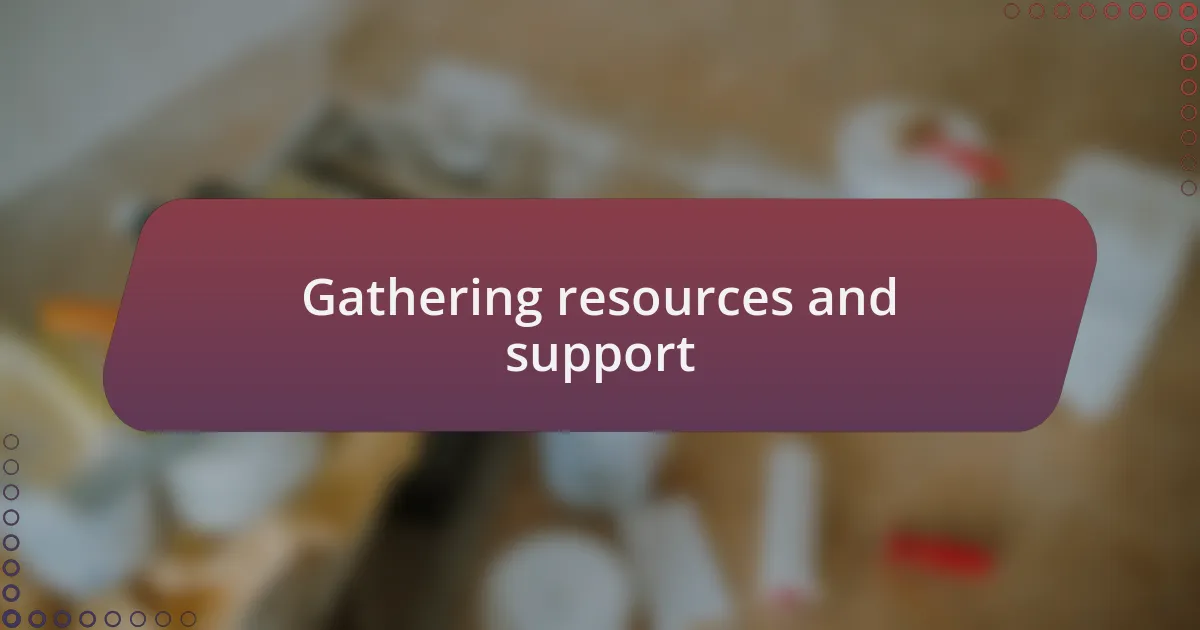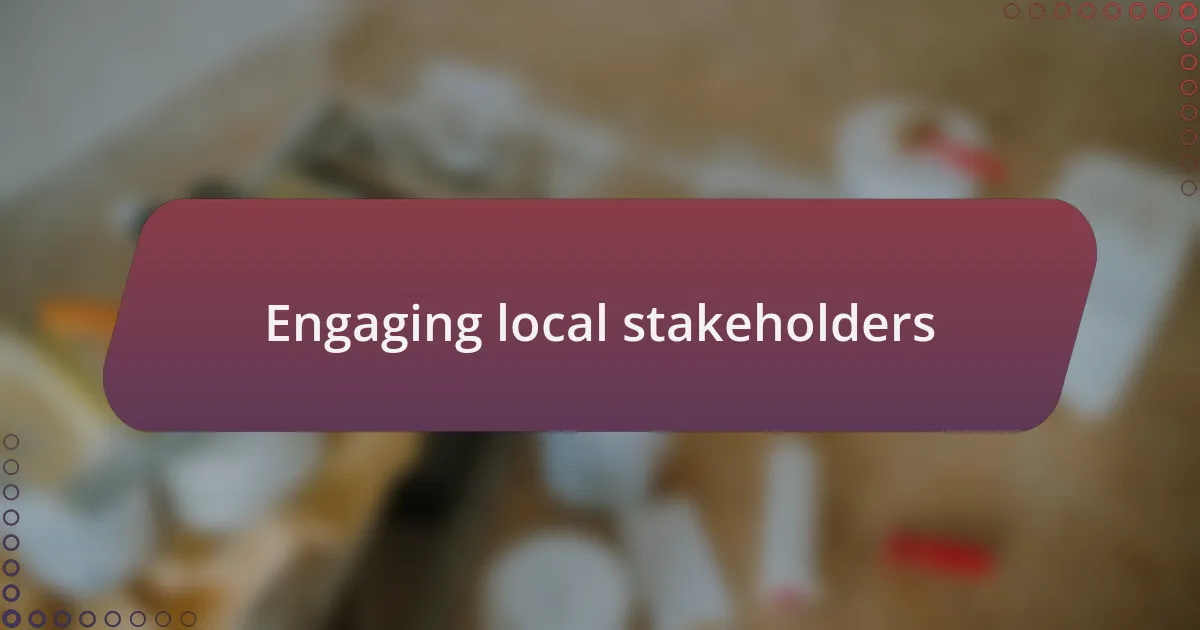Key takeaways:
- Post-conflict recovery requires community involvement and psychological support to heal traumas and restore social cohesion.
- Engaging local stakeholders and leveraging community resources fosters a sense of ownership and enhances recovery efforts.
- Evaluating both qualitative and quantitative impacts of recovery initiatives reveals the true success lies in individual emotional growth and renewed connections.
- Personal reflections highlight the importance of listening to community narratives, which enrich the collective recovery process and strengthen bonds.

Understanding post-conflict recovery strategies
Post-conflict recovery strategies are essential for rebuilding communities and restoring social cohesion. I once attended a workshop on integrating mental health into recovery programs. It struck me how crucial psychological support is; without it, can we really expect to heal fully from the traumas of conflict?
Direct engagement with local leaders and community members is another vital strategy. During a recovery initiative, I had the privilege of listening to the stories of survivors firsthand. Their resilience was inspiring, but it also highlighted a question that lingered in my mind: how can we ensure that their voices are heard and respected in shaping recovery efforts?
Economic revitalization is often a cornerstone of recovery strategies as well. I remember visiting a market that had been rebuilt after devastating violence, filled with vendors sharing laughter and stories. It made me wonder: how do we balance economic growth with the need for sustainable, long-term stability in these fragile environments? Each step we take in recovery should echo the hopes and dreams of a community yearning to reclaim its future.

Importance of community involvement
Community involvement is at the heart of post-conflict recovery because it fosters a sense of ownership and shared purpose. During our recovery event, I saw community members collaborate to create spaces for dialogue – it was incredible how simply bringing people together sparked trust and healing. Can we truly rebuild without putting those most affected at the forefront of the solutions?
The power of collective action cannot be overstated. I remember a moment when participants shared their experiences, revealing their raw emotions about loss and hope. These stories weren’t just narratives; they were seeds for future initiatives. It made me realize: when the community actively participates, they don’t just heal individually, but start to support each other in crafting a unified path forward.
Moreover, involving community members can unveil unique insights that external experts might overlook. For instance, a local artisan shared how his craft could be integrated into recovery programs, bridging economic and cultural restoration. This encounter reinforced my belief that engaging the community is key to developing appropriate and effective recovery strategies. What if we consistently prioritized these voices? The potential for resilience would be limitless.

Gathering resources and support
When it came to gathering resources and support for the event, I quickly realized that tapping into local networks was crucial. I reached out to entrepreneurs and small business owners, many of whom were eager to contribute in whatever way they could. One grocery store owner even offered to donate food, sharing not just resources, but a sense of solidarity that was palpable. Isn’t it fascinating how a simple ask can unveil a reservoir of goodwill?
I also turned to local organizations, which turned out to be a treasure trove of support. They not only provided financial backing but also helped spread the word about the event. The volunteers from these groups were passionate and energetic, ready to collaborate and lend their skills. It made me think: how often do we overlook these existing networks in favor of seeking help from distant sources?
Then there was the emotional support from within the community itself. As we organized, people began to share their stories and ideas for the event, each person adding their unique perspective. One woman suggested a series of art workshops as a form of expression and healing. I could feel the electricity in the air as her suggestion resonated with everyone. It hit me hard that the resources we seek often lie within our own people, waiting for a platform to be unleashed.

Engaging local stakeholders
Engaging local stakeholders was a vital step in making our event a success. I recall the conversations I had with local leaders who were passionate about the recovery of our community. They shared their visions and concerns, and I couldn’t help but feel inspired by their dedication. It’s remarkable how opening a dialogue can illuminate the shared values and priorities that bind us together. Have you ever experienced that moment when a simple conversation reveals common ground?
I also found that involving local artists added an entirely new dimension to our planning process. One talented local painter suggested using her artwork as a backdrop for our activities, creating an inviting atmosphere that spoke to our community’s resilience. This unexpected collaboration not only enhanced our event’s aesthetic but also fostered a sense of ownership among locals. It makes me wonder: how often do we underestimate the role of creativity in unifying and healing a community?
Moreover, the feedback I received during our planning was invaluable. It was heartwarming to witness community members offering insights and recommendations. Their input didn’t just help us refine our plans; it built trust and strengthened relationships. Reflecting on that, I realized that engaging stakeholders is not merely about gathering support—it’s about creating a shared journey toward recovery. How cool is it to think that each person involved plays a part in shaping our collective future?

Evaluating event impact
To truly evaluate the impact of our community recovery event, I focused on both qualitative and quantitative data. I remember sitting down with a group of volunteers post-event, where we shared our thoughts and observations. Listening to their stories about the connections formed that day highlighted the intangible benefits that statistics often overlook. Can numbers really capture the emotional growth and newly forged friendships that emerged?
In addition to these heartfelt narratives, I also distributed surveys to participants, gauging their experiences and perceptions. Many expressed feelings of renewed hope and connection. One participant told me she felt seen and heard for the first time in years; her words resonated deeply with me. It made me realize that the event’s true success may lie not in the number of attendees but in the impact on individual lives.
Moreover, tracking community engagement in the weeks following the event served as a practical indicator of its effectiveness. Local groups reported an increase in collaborative efforts, which spoke volumes. The initial spark we ignited seemed to encourage ongoing initiatives toward recovery. Reflecting on this, it prompted me to ask: how can we sustain this momentum and further amplify the positive ripple effects within our community?

Personal reflections on the experience
Reflecting on the event, I found myself overwhelmed with gratitude. One moment stands out vividly: as I watched a young mother embrace her friend after years of estrangement, I realized the power of connection in healing. It reminded me that our shared experiences can be a salve for deep wounds. Has there ever been a time when witnessing someone else’s joy touched your heart in such a profound way?
There were challenges, of course—navigating different personalities and expectations was often daunting. I recall the tension that arose during planning sessions when opinions clashed. Yet, overcoming these obstacles together deepened our bond, and I learned that growth often comes from discomfort. It was a reminder that despite our unique perspectives, we were united by a common goal: to rebuild trust and foster community spirit.
As I look back, a simple question lingers: what do we take away from such an experience? For me, it underscored the importance of listening actively and valuing each voice. The notion that every individual has a story worth sharing struck me profoundly. I hope to carry this lesson forward, encouraging others to share their journeys, as every shared story enriches our collective recovery.